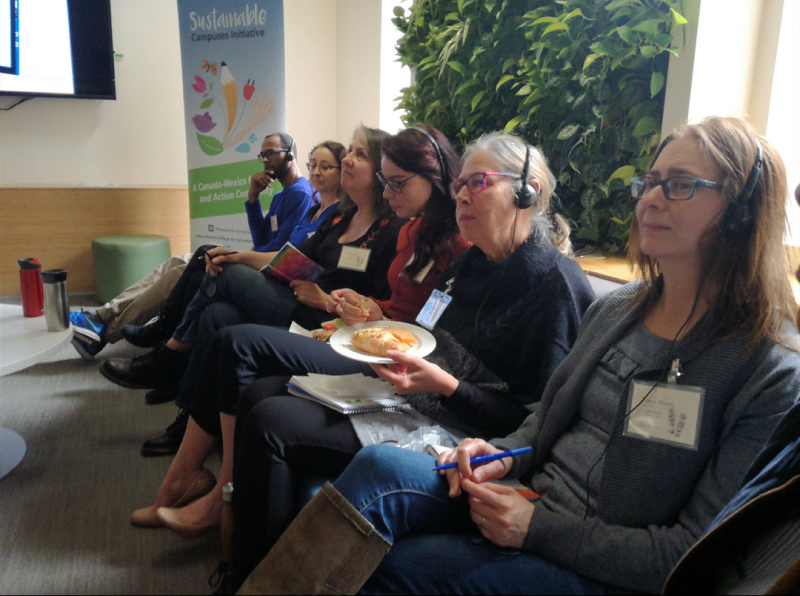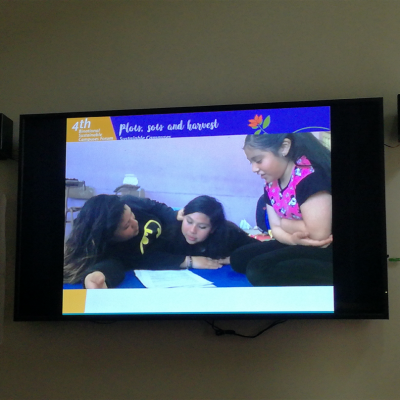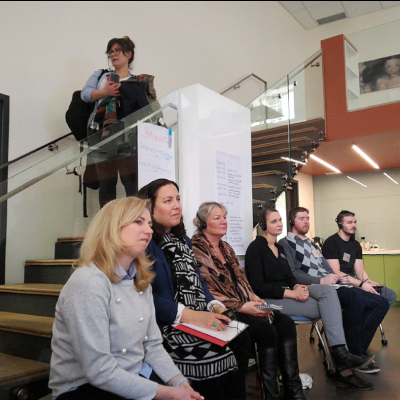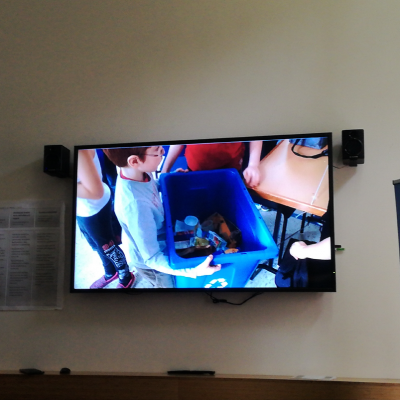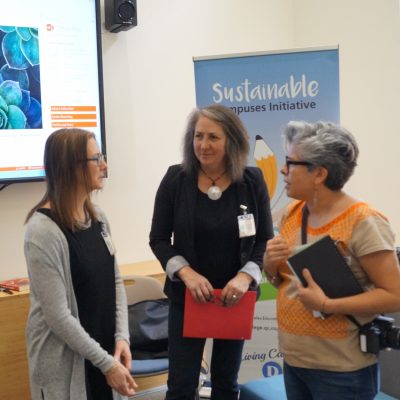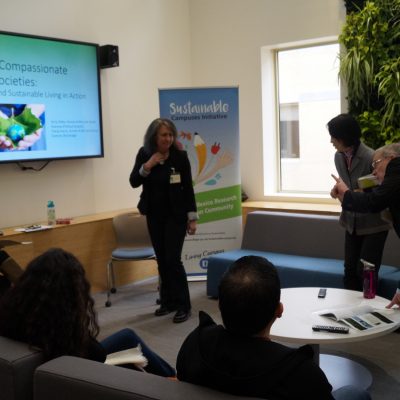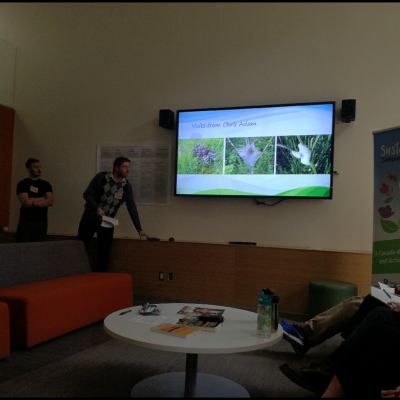English follows
Casandra Venegas, UPEMOR
¡Empezamos el día! Todos con un gran cansancio pero del bueno, del que quisieras tener un par de días más y con un clima mejor que ayer.
El dia comenzo con un simposio sobre Escuelas Vivas. Se dio una breve introducción a las actividades que se harían en el transcurso del día y cada uno de los participantes presentes habló un poco de manera personal respecto a de donde vienen y cuál es su proyecto.
 Fue interesante conocer una parte de cada uno, muchos de ellos venían del mismo lugar de trabajo pero tenían cargos diferentes a los temas tocados en el foro, que son el medio ambiente y la sustentabilidad; a lo largo del tiempo pudimos observar que este tema es bastante amplio ya que integra diferentes puntos importantes como lo es la parte social, el cómo involucrarla y qué estrategias se pueden tomar, como incentivar y concientizar a la gente para tomar acciones y ver un resultado tangible para obtener un planeta quizás no perfecto pero por lo menos sí mejor.
Fue interesante conocer una parte de cada uno, muchos de ellos venían del mismo lugar de trabajo pero tenían cargos diferentes a los temas tocados en el foro, que son el medio ambiente y la sustentabilidad; a lo largo del tiempo pudimos observar que este tema es bastante amplio ya que integra diferentes puntos importantes como lo es la parte social, el cómo involucrarla y qué estrategias se pueden tomar, como incentivar y concientizar a la gente para tomar acciones y ver un resultado tangible para obtener un planeta quizás no perfecto pero por lo menos sí mejor.
Los participantes de hoy buscan motivar a las generaciones futuras a ser más creativas, a buscarle solución a un problema ambiental y a proponer nuevas alternativas para mejorar el sistema. La mayoría busca encontrar un equilibrio entre sociedad, economía y ambiente lo cual podemos decir que es la base de un desarrollo sustentable.
Tres Marías es una escuela comunitaria, un tanto atípica y diferente a lo acostumbrado; Jorge Viana, Luisa Montes y Laura Hernandez nos hablaron de sus actividades incluyendo el taller de teatro y de cómo los estudiantes intentan representar a los pájaros y demás especies existentes en la biodiversidad de la comunidad pero curiosamente ellos jamás han pisado un teatro y mucho menos han presenciado una.
Hablaron de su proyecto llamado plantas medicinales, este involucró alumnos, formando así una comunidad preocupada e interesada por crear un proyecto sustentable. Realizar los proyectos fue un reto (dijeron) ya que no se contaba con el presupuesto y tuvieron que buscar el fondo para comenzarlos.
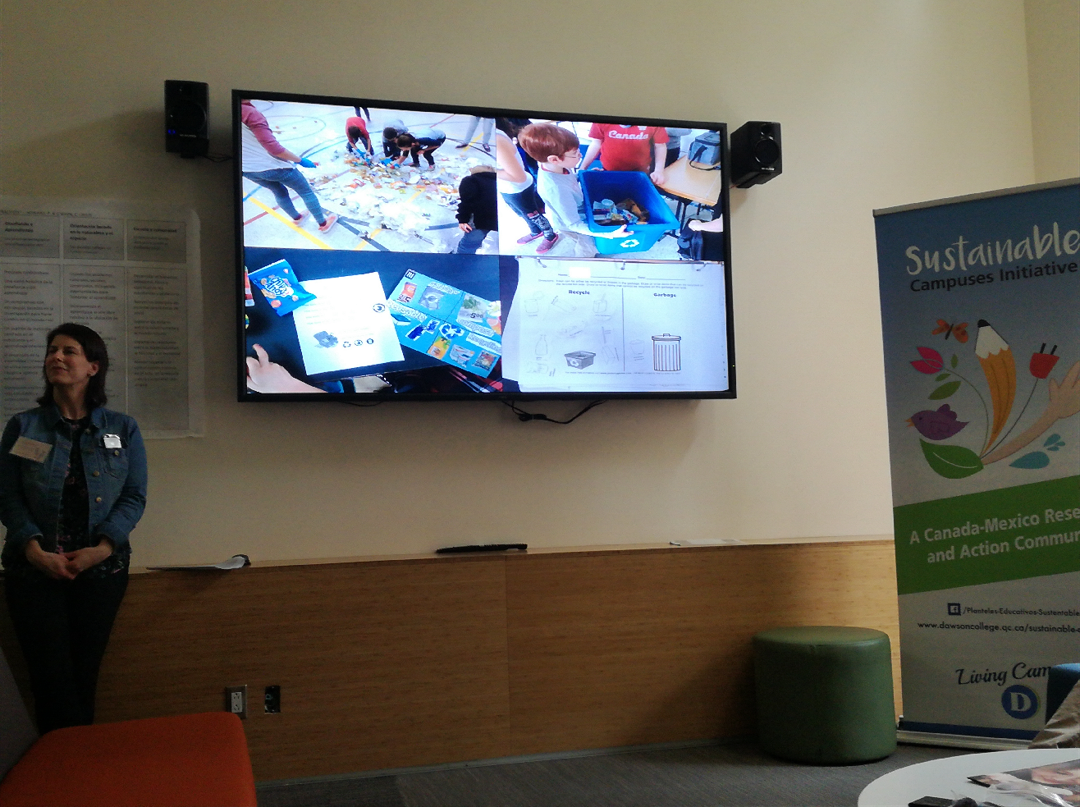 Los profesores de la Escuela Primaria Cookshire nos presentaron sus esfuerzos para llegar a ser una Escuela Viva. Nos presentaron un vídeo en el cual los alumnos participaban en una serie de actividades de educación ambiental. Algunas de ellas es hacer la separación de sus residuos, con el fin de inculcarles la importancia de saber distinguir en lo que puede ser regresado a la tierra como lo es la creación de una composta, lo que puede ser reutilizado y convertirse en un beneficio propio o comunitario y que debe ser desechado definitivamente para ser manejado por especialistas.Ellos quieren conectar con diferentes proyectos para crear un intercambio de conocimientos. Comentan que es interesante ver a niños de 5° y 6° grado convivir y participar en las mismas actividades, observar cómo aportan unos con otros sus ideas y cómo interactúan entre sí por un tema tan importante como es la sustentabilidad.
Los profesores de la Escuela Primaria Cookshire nos presentaron sus esfuerzos para llegar a ser una Escuela Viva. Nos presentaron un vídeo en el cual los alumnos participaban en una serie de actividades de educación ambiental. Algunas de ellas es hacer la separación de sus residuos, con el fin de inculcarles la importancia de saber distinguir en lo que puede ser regresado a la tierra como lo es la creación de una composta, lo que puede ser reutilizado y convertirse en un beneficio propio o comunitario y que debe ser desechado definitivamente para ser manejado por especialistas.Ellos quieren conectar con diferentes proyectos para crear un intercambio de conocimientos. Comentan que es interesante ver a niños de 5° y 6° grado convivir y participar en las mismas actividades, observar cómo aportan unos con otros sus ideas y cómo interactúan entre sí por un tema tan importante como es la sustentabilidad.

Luego de una pausa con un increíble menú…
Realizamos una dinámica con carteles para analizar los atributos y las prácticas de escuela viva. Se dio paso a la presentación de ellos, donde cada equipo aportó y explicó sus ideas, sus posibles metas, visiones ante puntos como la educación ambiental, los valores, el liderazgo en las instituciones, etc.
El simposio fue finalizado y se dio apertura a una presentación por parte de la Dra. Ruth Belinda Bustos UPN, la cual trataba de la diversidad cultural en México, la migración de poblaciones indígenas a zonas rurales y el programa de enseñanza de UPN para el medio indígena. Se mencionó que muchos de los alumnos han sufrido algún tipo de discriminación ya sea por su apariencia, su lengua el náhuatl o su raíz de origen el cual es indígena.
Todos podemos aportar algo, como un manojo de ideas y creatividad, somos la base de todo proyecto exitoso.
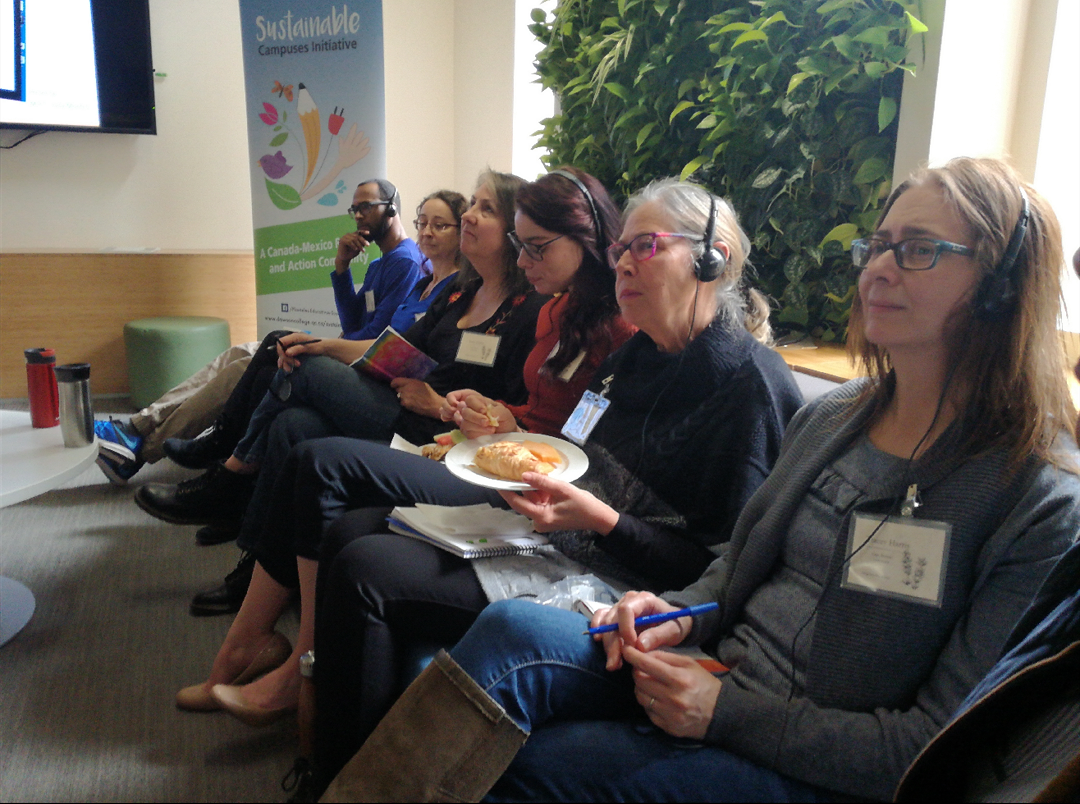 3rd day of the 4th Sustainable Campuses Forum in Dawson
3rd day of the 4th Sustainable Campuses Forum in Dawson
Casandra Venegas, UPEMOR
We start the day! We were all tired but it was the good kind of tired, the kind where you wish you had an extra couple of days and better weather than yesterday.
The day started with a symposium on Living Schools. A brief introduction was given to the activities that would be done during the day and each one of the participants present spoke a little about where they came from and what their projects were.

It was interesting to get to know each one of the participants, many of them came from the same institutions but had different positions related to the topics explored in the forum, environment and sustainability; throughout the day we observed that this topic is quite broad because it can include different important points such as the social components, how to involve it and what strategies can be taken, how to encourage and raise awareness among people to take action and see a tangible result to obtain perhaps not a perfect planet but a better one.
Today’s participants seek to motivate future generations to be more creative, to look for solutions to environmental problem and to propose new alternatives to improve the system. Most seek to find a balance between the social, economic and environmental components which we can say is the basis of sustainable development.
Tres Marías is a community high school, somewhat atypical and different from the usual; Jorge Viana, Luisa Montes and Laura Hernandez shared with us about the school and some of their projects such as the theater project. Students represent birds and other species existing in the biodiversity of the community but curiously they have never set foot in a theater nor seen a play. They also presented their medicinal plants project. This project involved students, thus forming a concerned community interested in creating a sustainable project. Carrying out the projects was a challenge (they said) since they did not have the budget and they had to find funds to start them.
 Teachers from the Cookshire Elementary school presented to us their efforts to become a Living School. They showed us a video in which students participated in a series of environmental education activities. Some of these include the separation of their waste, in order to instill the importance of knowing how to distinguish what can be returned to the earth as it is the creation of a compost, what can be reused and become a personal or community good and what must be definitively discarded to be handled by specialists.
Teachers from the Cookshire Elementary school presented to us their efforts to become a Living School. They showed us a video in which students participated in a series of environmental education activities. Some of these include the separation of their waste, in order to instill the importance of knowing how to distinguish what can be returned to the earth as it is the creation of a compost, what can be reused and become a personal or community good and what must be definitively discarded to be handled by specialists.
They want to connect with different projects to create an exchange of knowledge. They comment that it is interesting to see children of 5th and 6th grade coexisting and participating in the same activities, observing how their ideas contribute to one another and how they interact with each other on a topic as important as sustainability.

After, a break with an incredible lunch menu …
We continued the symposium with an activity where we used posters to analyze the attributes of a living school and how they can be put in practice. Each team contributed and explained their ideas, their possible goals, visions on environmental education, values, leadership in institutions, etc.
The symposium was finalized and Dr. Ruth Belinda Bustos from the UPN presented about cultural diversity in Mexico, the migration of indigenous populations to rural areas and the UPN teaching program for indigenous communities. It was mentioned that many of the students have suffered some kind of discrimination because of their appearance, their Nahuatl language or their ethnic roots, which are indigenous.
We can all contribute something, we are a cluster of ideas and creativity, we are the basis of any successful project.

